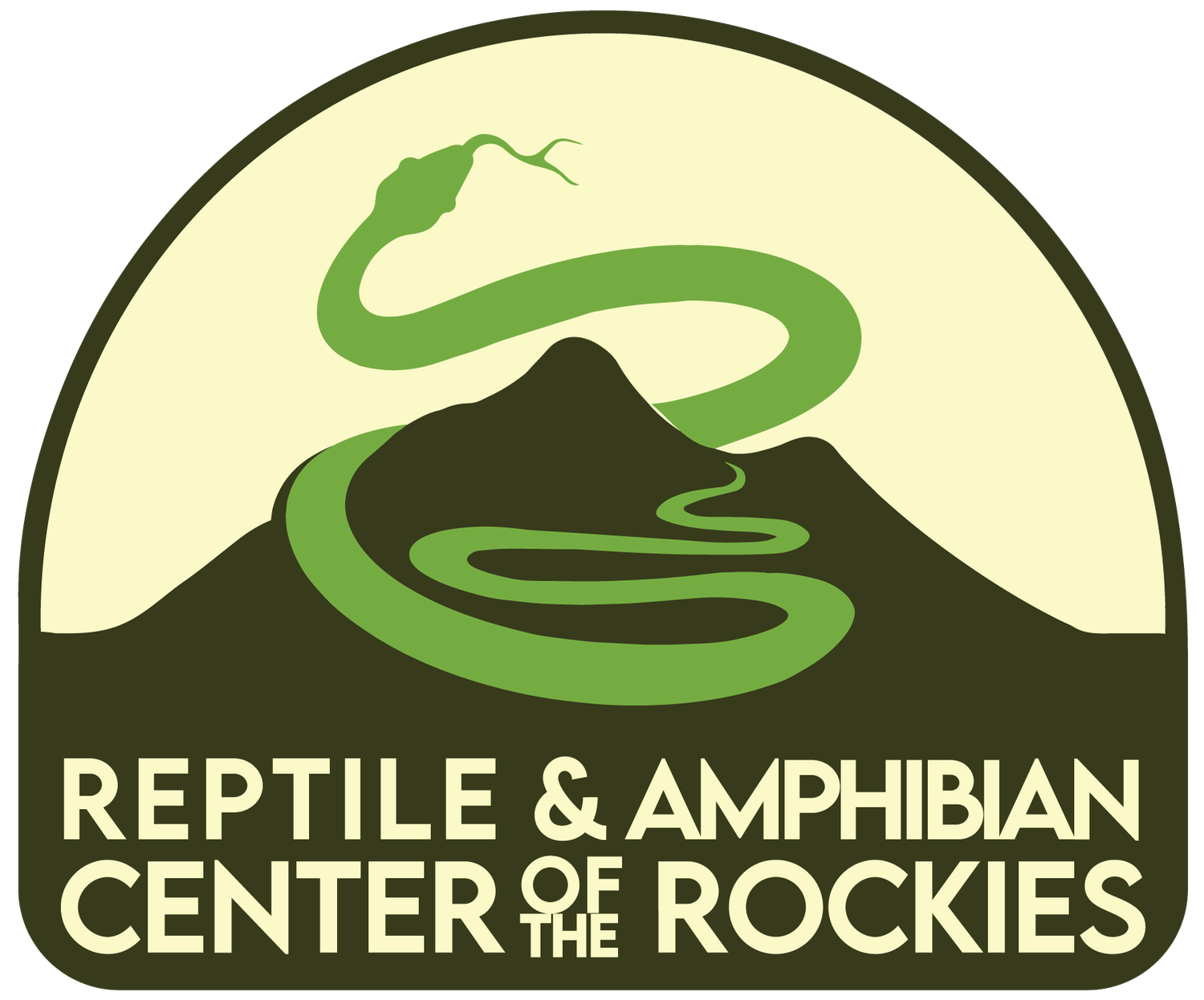Keeping Nature Wild Along the Colorado Front Range
By Kate Boyd
President of Northern Colorado Herpetological Society
Volunteer & Operations Coordinator for Northern Colorado Wildlife Center
There are many blurred lines between wild species and species that are commonly kept as pets among reptiles and amphibians, particularly because all of our reptiles and amphibians that are kept as captive animals are not domesticated. Many states have regulations that allow for the capture and captive care of reptiles and amphibians, including in the Northern Colorado Herpetological Society’s (NCHS) home state of Colorado. While it may be legal to “collect” a certain number of wild animals for captivity, is it ethical? We believe that answer depends on the specific situation, species, and other care capacity factors. In general though, a wild animal that is healthy enough to have an acceptable quality of life in the wild should stay in the wild.
A species that we see a particular need to protect locally and want to promote keeping these animals wild are Ornate Box Turtles. Due to their adorable features, small size, and relatively easy care requirements for a backyard environment here in Colorado, these terrestrial turtles are often taken in as pets.
Their numbers are drastically declining along the front range of the Rocky Mountains
…primarily due to urban development and their small home ranges. Box turtles live their entire adult lives in a very small range, approximately 6 football fields (280,000 sq.ft.) worth of square footage. Ornate box turtles make their homes in prairie environments that are also ideal in Colorado for housing developments. Box turtles that spend a 20-30 year lifespan in such a small space are being uprooted from their homes by urban development.
In the past few years NCHS has seen an exponential increase in calls from folks who have “found a lost turtle pet” in their neighborhoods, when in most situations, it is a wild turtle who has likely called that area home for many more years than the housing development existed. Which leads to some tough decision making, should this animal be released into the housing development that is no longer an ideal habitat? Should it be relocated? Should it be adopted out as a pet to best serve the animal’s quality of life? Relocation has shown to be relatively unsuccessful, with studies on relocation of box turtles demonstrating a trend of higher mortality rates. Sometimes the best situation for the individual animal is to be adopted out to a captive home, which sadly leads to greater decline in our native populations.
Pictured Below: Several box turtles that have ended up in our care. Please note that these turtles have been adopted into loving homes due to irreversible deformities that developed due to human interference.
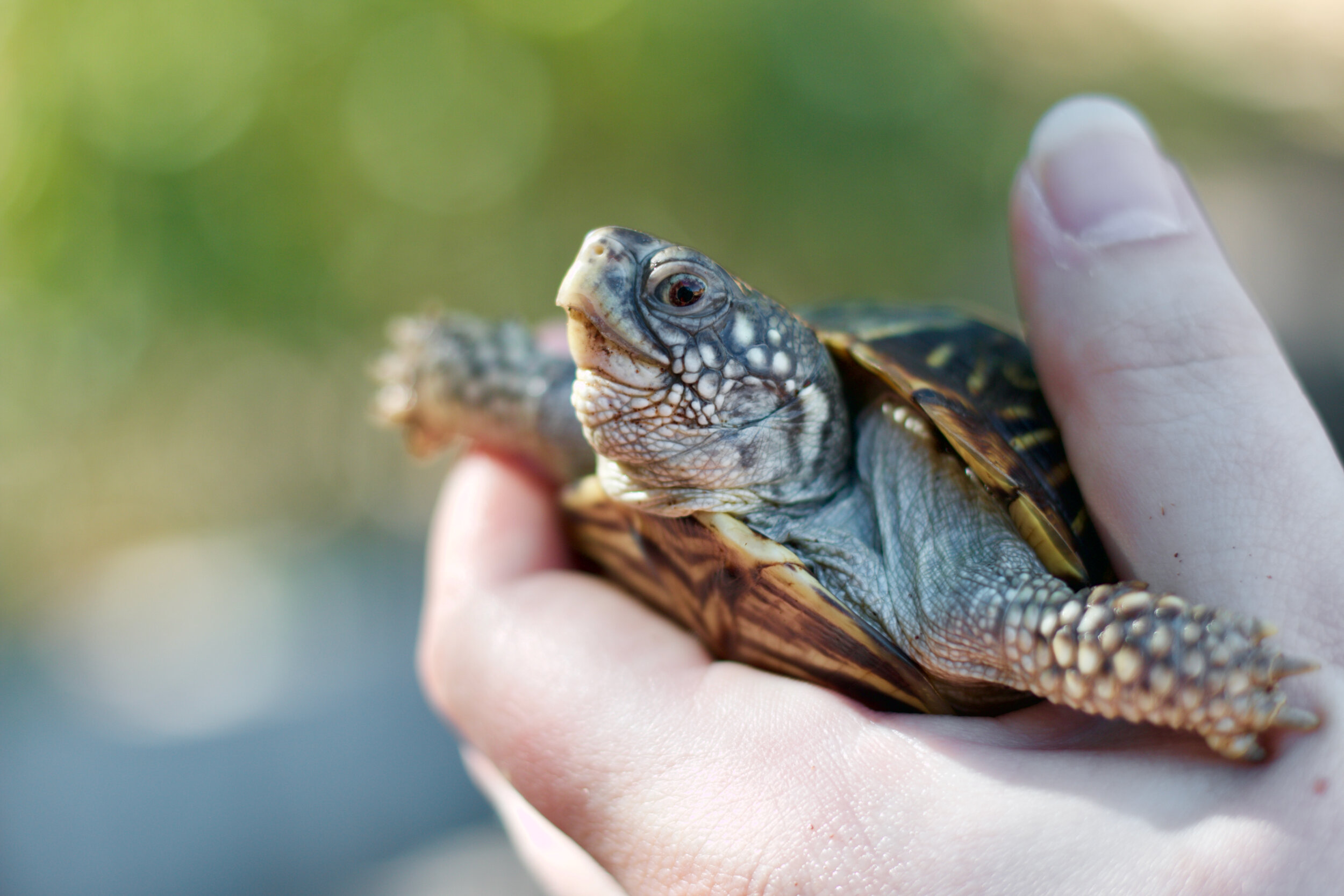
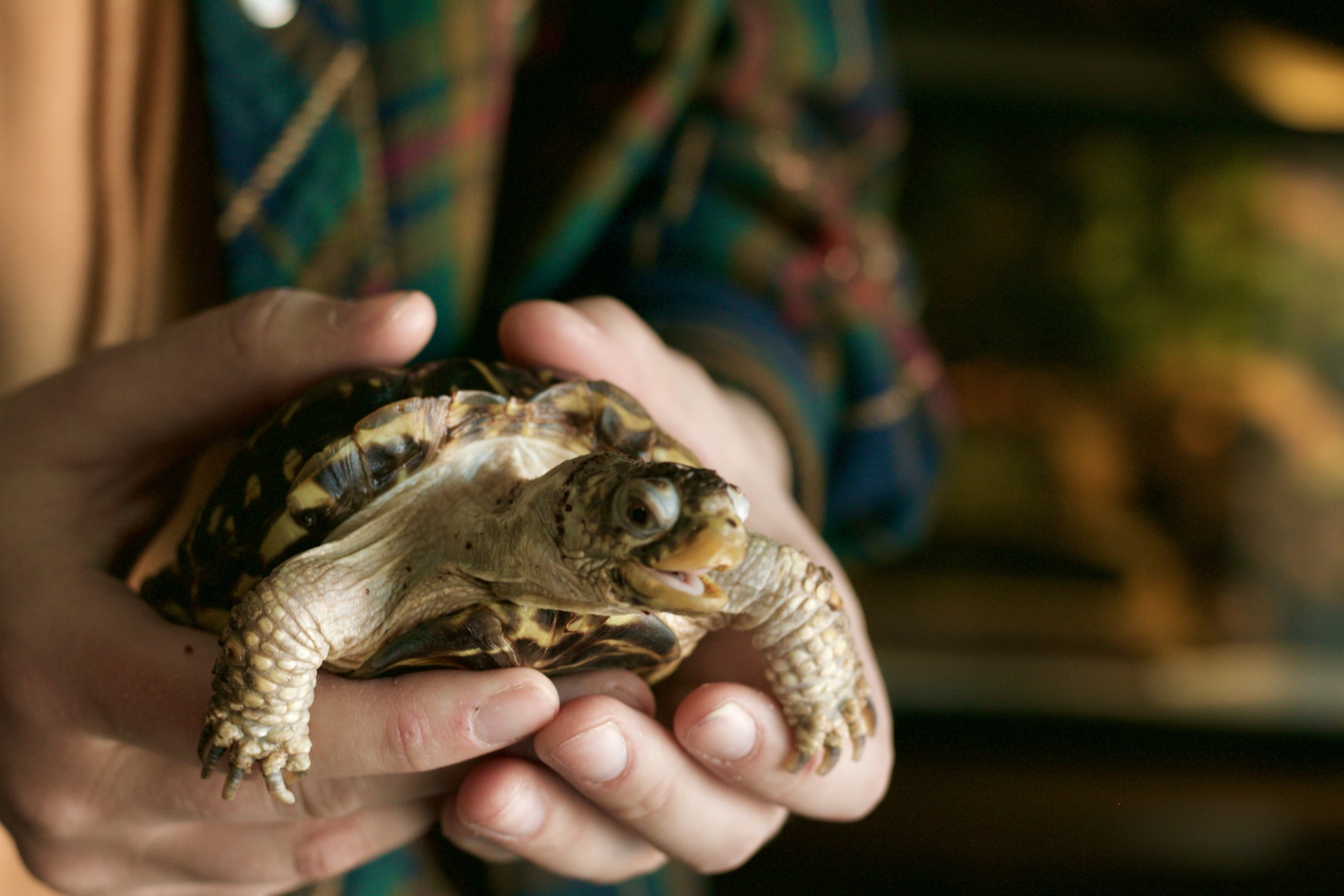

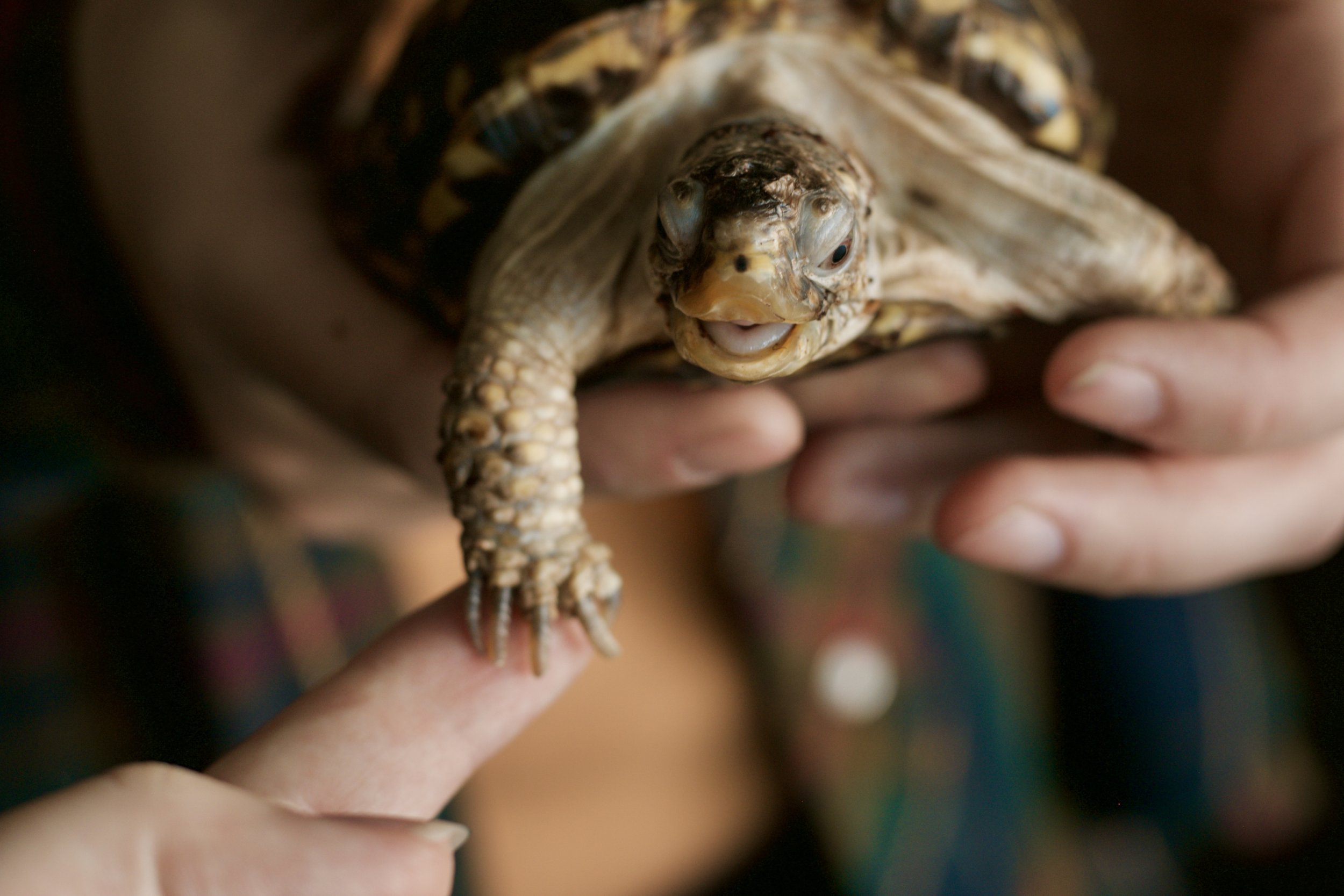
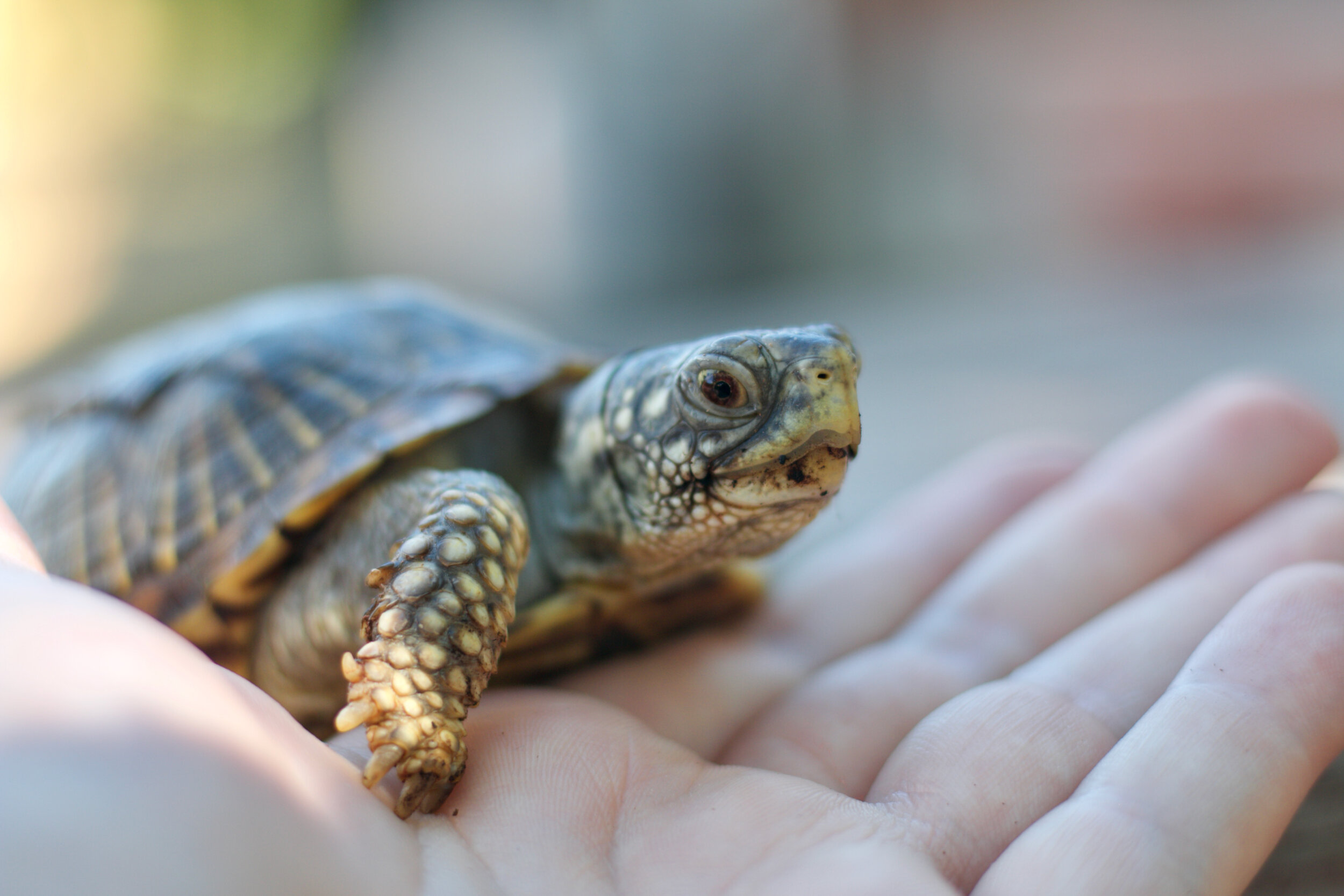
When folks find these wild turtles and experience their gentle behavior, they may decide (without research or expert advice) to keep the animal as a pet.
Keeping these animals captive can also lead to detrimental health effects on the individual animal if folks are not educated on their specific environmental requirements, dietary needs, and lifespans. Which was the case for one of our educational ambassadors, Ducky, who was found at a local natural area with some physical deformities that are indicative of Metabolic Bone Disease (MBD), a condition caused by a lack of sufficient calcium, vitamin D, and UVB light (Needed to synthesize Vitamin D). Ducky was most likely kidnapped from the wild at a young age and not provided the necessary vitamins and nutrients needed for proper shell and bone development. Due to her deformities, she cannot use her hinged plastron to “box” herself up to stay safe from predators in the wild or from the elements in the wintertime. She also has some beak deformities that make it so that she cannot eat solid foods. Because she cannot eat independently or defend herself from predators, she cannot be released back into the wild. Ducky is now an animal ambassador for the Northern Colorado Herpetological Society where she travels to schools and community groups to teach kids and adults alike about our native species and how important it is to keep animals, like her, wild and not in need of captive homes.
At the Northern Colorado Herpetological Society, we partner with other organizations, like the Northern Colorado Wildlife Center, to provide support and information for people who have found native species in our urban environments and how best to keep that animal wild. We also provide support and adoptive resources for animals that cannot be released back into the wild, whether due to health defects like Ducky’s, or unsuitable habitats like housing developments or urban settings.
Sources:
